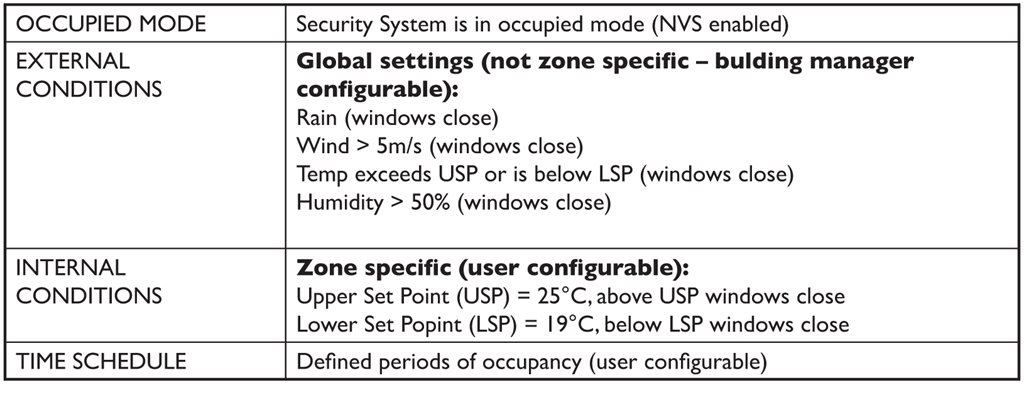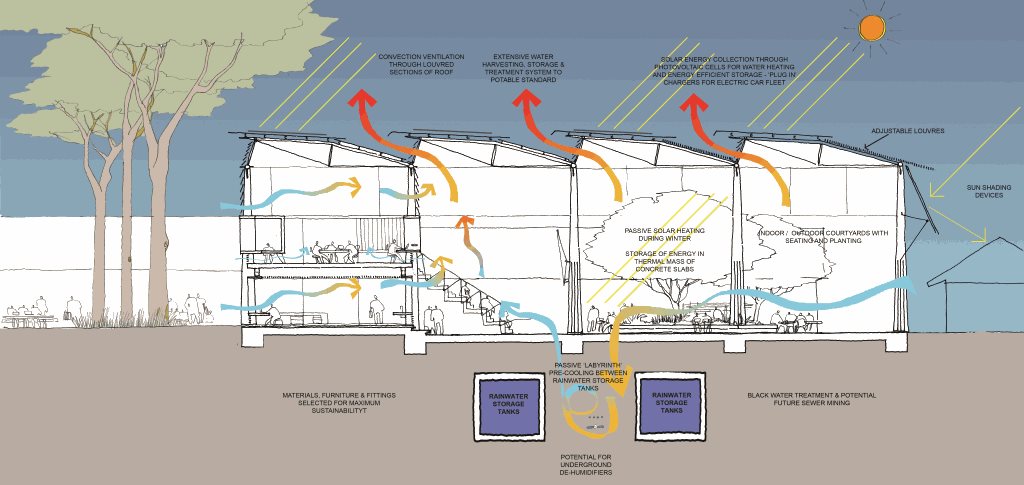WMK Architecture and a team of consultants have met an ambitious challenge set by a school principal to reinvent the traditional education building design and, in the process, created a highly sophisticated mixed-mode building ventilation strategy.
Stephen Harris, principal of The Northern Beaches Christian School (NBCS) in Sydney, has led the vision for the school's new building works since day dot, requesting from the very beginning that the architect's concept for their new admin, science and student services building align with the school's collaborative and innovative learning paradigm.
WMK won the brief to deliver the new project as part of a design competition and have since completed the second stage of building works--a new state-of-the-art building with science rooms, student service facilities, a canteen and a new performance space, all serviced by a mixed-mode ventilation system.
The building is set out in a sequence of multi-level pavilion buildings which sit beneath a 3,000sqm canopy structure that generates energy, harvests rainwater and cools the spaces below. It is serviced by a sophisticated mixed-mode ventilation system which uses a variety of cutting edge building products and adopts the latest in building automation technology.

Photography by Brett Boardman
The Natural Ventilation System (NVS) at NBCS automatically controls the thermal comfort of the building occupants by monitoring both internal and external conditions and adjusting mechanical air conditioning and operable windows to suit.
The NVS provides natural ventilation to each of the building's 10 Natural Ventilation Zones (NVZ) during favourable conditions but will call for mechanical heating or cooling as required when internal temperatures are above or below the predetermined set points.
The operation of the system is determined by the external weather station in conjunction with the temperature sensors in each zone. Heating, cooling or natural ventilation modes are selected according to the external conditions and the conditions within each NVZ as referenced against identified set points.
Each NVZ will operate independently of any other zone based on the following parameters:


The entire ventilation strategy at NBCS is controlled by a central unit which can be tweaked by the building manager. Image: EBSA
An EBSA Ecobus NVS controls and incorporates all internal sensors, weather station, wall switches, touch screens and programming logic for the building. Other than the Ecobus, the major building products at play in NBCS's NVS include high-level Powerlouvres from Breezway, 170 automated thermally broken aluminium Capral Futureline awning and sash windows, and automated double glazed Schneider MP2 Louvres from EBSA Projects.
WMK chose to use a Variable Refrigerant Volume System from Aircool to provide relief when temperatures, humidity and wind levels are too extreme to have the windows open. Operated by the BMS, the system circulates the minimum amount of refrigerant needed at any one time and also enables individual climate control of each NVZ.
All of the components are plugged into the Building Management System (BMS) which controls the mechanical heating / cooling within the various zones.

ESD Diagram: WMK Architecture.
While mixed-mode ventilation systems are by no means new, the NBCS by WMK Architecture shows the system's compatibility with new building automation and BMS technology. Due to its infancy, the NBCS building is yet to have a thorough long-term test on its efficiency and energy savings, however since the students moved into their new building all reports are that it is incredibly comfortable to work in.
If nothing else WMK Architecture have provided a test bed for architects looking for an alternative ventilation strategy to mechanical or natural ventilation systems which can provide both high-levels of comfort for building occupants as well as a greener alternative to air conditioning.

